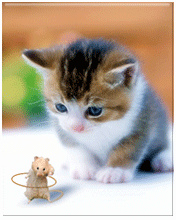
Chisel Art after 1800
Hans Michelsen (1789-1859), a Norwegian national students from Danish sculptor, Bertel Thorvaldsen living in Rome, came at the time of the reign of King of Sweden, King Karl Johan and lived for several years in Stockholm. He then returned to Norway and propose improvements Nidaros Dome. Afterward, Michelsen and his friend Julius Middelthun (1820-1886) followed classical sculptural principles, but also strongly influenced by the realism. Another important sculptor, Brynjulf Bergslien (1830-1898), developed a Realistic style which comes from the National Romanticism. His work is a sculpture of Karl Johan kingdom terleta outside Oslo. While Stephan Sinding (1846-1922) also gained international recognition for the work of carvings that are more classic.
1880 and 1890 was a period in which Norwegian sculpture influenced by symbolism, and sculptures created by Gustav Vigeland (1869-1943) during this decade represents the works of the best art of the time in a European context. Vigeland worked for some time to repair Nidaros Dome, but after the year end, he developed a more simple style. Vigeland Park in Oslo, together with Vigeland private museum displaying the entire collection of carvings and various artistic phases. Svor Anders (1864-1922) and Lars Utne (1862-1922) is an important generation of Vigeland.
Beginning in 1920, the flow of new sculpture that is Expressionism developed, and later became the trademark Norwegian sculpture throughout the century. This flow stated in the works Dyre Vaa (1903-1980), Gunnar Janson (1901-1983), Emil Lie (1897-1976), Nic Shciøll (1901-1984), Stinius Fredriksen (1902-1977), Per Hurum ( 1910 - 1989), Per Paalle Storm (1910-1994), Anne Grimsdalen (1899-1961) and Joseph Grimeland (b1916).
From the year 1950 is Aase Texmon Rygh (b1925), Carl Nesjar (b1920) and Odd TANDBERG (b1924) who work with basic mathematical and geometric shapes more. Art is more abstract sculpture was introduced by Arnold Haukeland (1920-1983) and the flow of surrealism and konstrukturalisme by Ramon Isern (b1914). Nils Aas (b1933) presents sculpture with figurative meanings, and is known for individual expression in his carvings. Other works that deserve attention in this period was the work of Knut Steen (b1924), Boge Berg (b1944), Arne Vinje Gunnerud (b1930) and Ola Enstad
(b1942).
During the year 1970, the Norwegian sculpture once again influenced by international trends and styles. Bard Breivik (b1948) and Kristian Blystad (b1946) represented a new generation of Norwegian sculptors and both opposed the 1920 year old tradition. Breivik's work combines the art of crafting a very beautiful with a simple design, with a focus on the quality of materials used. While the present work Blystad better shape, but remain focused on the same quality. Together they have given birth sculpture Norway back and give a new identity. Important sculptors of this period include Nico Wideberg (b1960), Gunnar Torvsund (b1948), Helge Røed (b1938), Per Ung (b1933), Thor Sandborg (b1942), Sissel Tolaas (b1946), Wenche
Guldbransen (b1947) and Istvan Lisztes (b1942).
In recent years, the Norwegian sculptors have developed their work involves more than just the art of carving and use other materials instead of stone, bronze or marble. Jon Gundersen (b1942) creates sculptures by using 'modern society that can be disposed of', creating ironic transformation and sharp through the recycling of waste. Kjell Erik Killi Olsen (b1952) uses metal and in particular because dikenla art metal sculpture in Vesterålen (1994). Kjartan Slettemark (b1932) lives and works in Sweden, but his works are powerful and provocative important influence. He worked with a variety of materials, with the main focus of the trash doll assembly; new work at the intersection of sculpture Angara and assembly. Some contemporary sculptors have experimented with other media such as light, sound, place and movement. The names to be reckoned with is Per Inge Bjørlo (b1952), Iver Jåks (b1932), Ola Enstad (b1942), Bente Stokke (b1952), Marianne Heske (b1946), Inghild Karlsen (b1952), Børre Larsen (b1952), Per Barclay (b1955) and Michael O'Connel (b1950).







Tidak ada komentar:
Posting Komentar